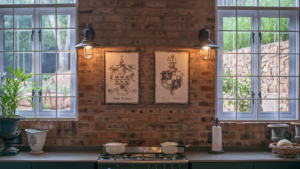When preparing for a fire, the most crucial aspect is having a plan in place to protect you and your family. Most households do not have a plan in place. This article will provide you with a guide that you can use to assist your family in preparing for fire and give your family some peace of mind.
According to experts, it takes two minutes for you to escape a burning home before it is too late to get out. That is why it is crucial to have a safety plan in place, as it would ensure that all the family members understand what to do in the event of a fire occurring in your home. It can be challenging to find information regarding how you create a fire safety plan, but luckily we have all the information that you will need to create one. The following steps will assist you in creating a fire safety plan for your home.
- The Reaction
The primary purpose of having a fire safety plan is it directs how you will react when the smoke alarm goes off or if someone detects a fire. A minor fire can eventually burst into a devastating fire within minutes which is why you must be well prepared for it. You need to establish an evacuation plan and ensure that every family member leaves the building as quickly as possible. Therefore, every member needs to understand the escape routes they are to use in case of a fire.
When the smoke alarm goes off, the members of your family should know that they should be calm and drop to the floor. Dropping to the floor is vital as the smoke in the house will likely rise to the top. Therefore, there will be no air to breathe at head level, potentially leading to them losing consciousness. You should keep low and crawl towards the designated primary fire exit and ensure that your face is always covered with your hands or a piece of clothing. When you touch the doors, and it feels warm, or the door handles feel warm, this could indicate a fire on the other side, so you should use the secondary fire escape.
Everyone in the house should know that once the house is on fire and you are already outside, no one should go back to fetch anything. You should wait for the fire department that is trained to handle these situations.
- The Layout
Once everyone understands how they should respond in the case of an emergency, then you need to put the layout of your home’s floor so that everyone understands the evacuation plan. The potential fire hazards will influence the escape routes and the security exits for your home. Having the layout in place will ensure that you know the quickest way to use as an exit route for each room. If you discover that there are many possible routes available, the quickest route should always be the primary route, and then you should use the secondary route if the primary route has been blocked. Ensure that nothing is blocking the primary route, such as furniture.
- The Exit
There should be at least two exits that are available in your home in case of an emergency. You can use the printed layout to discover the primary exit and any other rooms that can be blocked if a fire were to start. Ensure that if there are more than two exits on opposite sides of the house, they both do not get blocked at the same time, as this could turn your home into a fire trap.
Once you have determined the exit points in the house, you must take the time to practise exiting from both exits quickly. Though doors would be the best exit points, it might be impossible; so it is crucial that you also use windows as secondary exit points. Ensure that all the windows work well and that it is easy to push out the panels so that you can jump out of the window. If your windows have burglar bars, ensure that they have quick release handles on the bars and that every home member understands how to use them.
- Pick a Meeting Place
When all the family members are aware of the exit points that they can use, you should choose a place where everyone will meet. In the event of a fire, it will be easier for a quick headcount, and it will help prevent people from going back to rescue other people who are already outside. If someone is missing, you can inform the fire department where the person was sleeping to get to them quickly.
The meeting place should be an open place with an unobstructed view of the house, like the end of your driveway. Children must know the meeting place. You should also calmly wait outside until assistance arrives. You can ask the neighbours to assist you in calling the fire department if no one has a mobile phone at hand.
- Practice
It is not enough to merely create a plan, but you must practise your plan with all your family members until you can all escape the house in less than two minutes. Practise by yelling fire as loud as you can and several times, and then leaving using different rooms in different scenarios. It is also important to practise by crawling as in a fire you might have to do that. It is advised to practise your fire safety scenarios at least twice a year.
- Check Smoke Alarms and Fire Hazards
The key to a successful fire safety plan is having fully operational smoke alarms at every level of your home. Smoke alarms will detect smoke before you start to smell it, which will sound the alarm, ensuring that you and your family can escape in time. Therefore, you must check the smoke alarms once each month and change the batteries once a year.
Conclusion
Having a fire safety plan in place is essential as it can save the people’s lives in your house. However, it can be turned into a fun family activity, especially for younger children. Creating a fire safety plan does not have to be complicated if you follow the steps offered above. Having one in place will ensure that you have better peace of mind.
Also see 5 Tips on Creating an Emergency Plan for Your Family.



